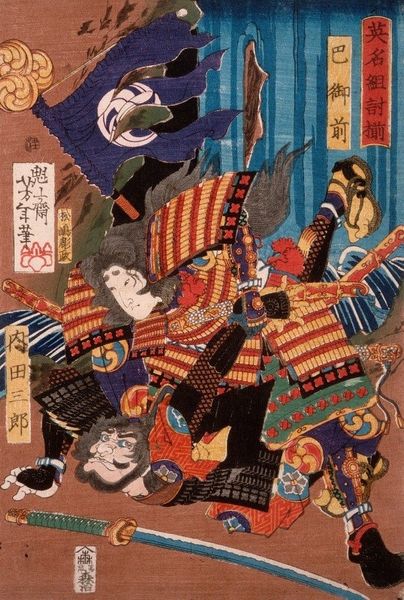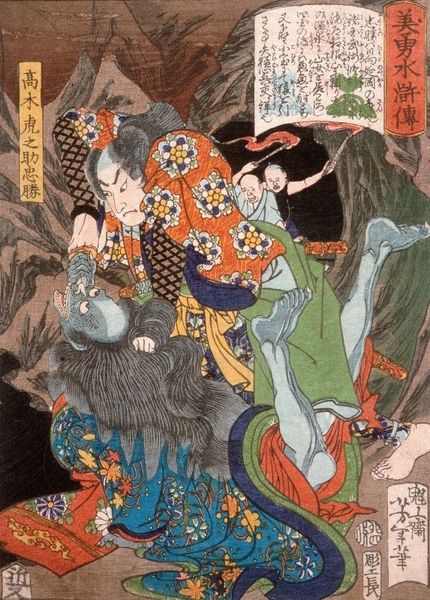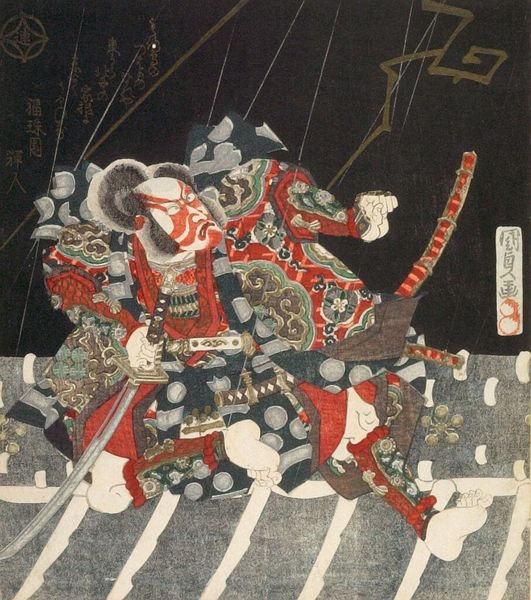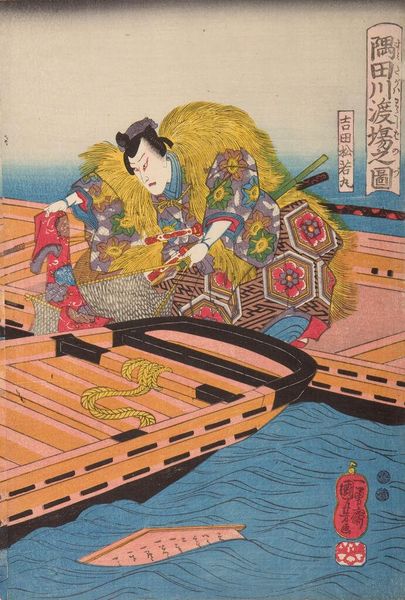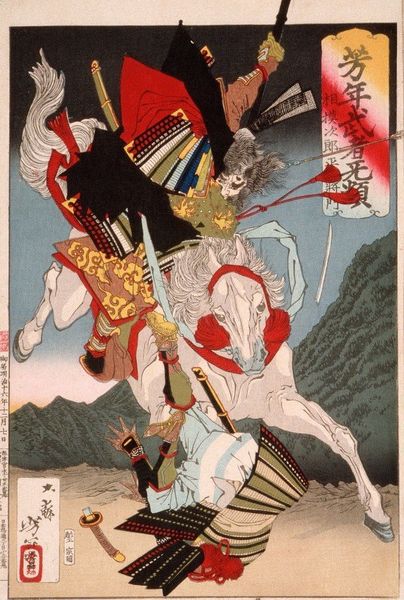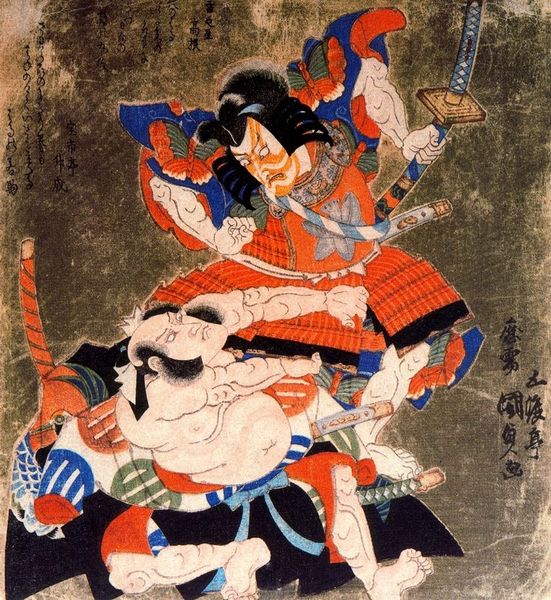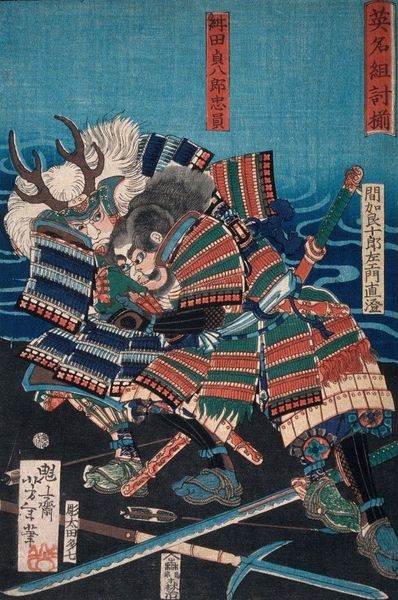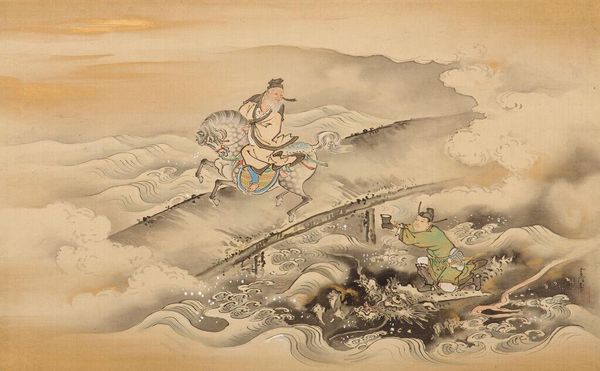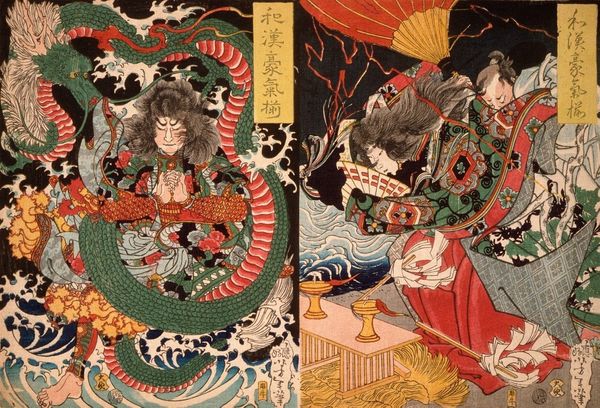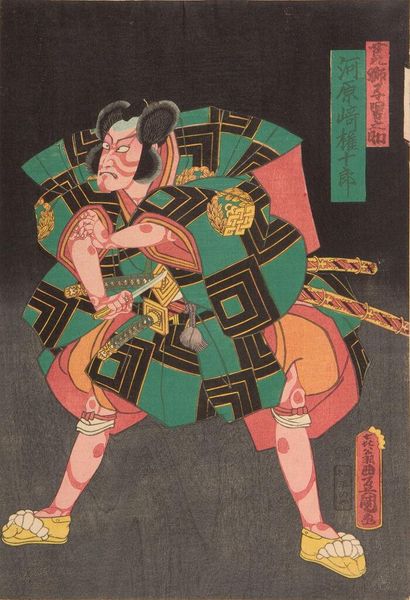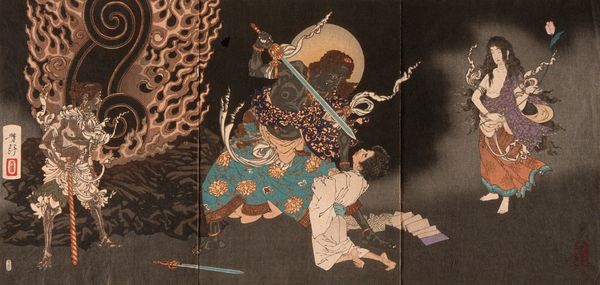
Copyright: Public Domain: Artvee
Curator: Welcome. We're here to consider "Hōjō Tokimasa of Tōtōmi Praying to Benzaiten," a woodblock print made in 1883 by Tsukioka Yoshitoshi. What strikes you first about this image? Editor: It’s dramatic! There’s a palpable tension between the praying figure in the foreground and the looming deity amidst crashing waves behind. It feels like a pivotal moment fraught with anxiety and hope. Curator: Yoshitoshi masterfully balances representational and abstract elements. Observe how the geometric patterns in the samurai's robes contrast sharply with the organic forms of the waves and Benzaiten's flowing garments. This juxtaposition creates a visual rhythm, wouldn't you agree? Editor: Indeed, and Yoshitoshi's composition draws me in on several levels. Beyond the striking visual organization, consider the historical context. Hōjō Tokimasa, a key figure in the Kamakura shogunate, seeks guidance from Benzaiten, the goddess of music, eloquence, wealth, and longevity. This moment underscores the reliance on divine intervention during turbulent times, reflective perhaps, of anxieties within the Meiji era itself. Curator: That reading resonates. The swirling waves are echoed by the deity’s presence, creating dynamic symmetry. What might those formal echoes reveal? I find Yoshitoshi subtly portraying an unstable socio-political landscape of the late nineteenth century through visual means. Editor: The figure of Benzaiten amidst such chaos reads powerfully today, given the ever present threats of climate change and ongoing geopolitical conflict. The waves aren’t just artistic flourishes; they suggest imminent disruption and call into question patriarchal power. It seems like an incredibly timely image of seeking answers in an uncertain world. Curator: It certainly sparks further thought, and in considering Yoshitoshi’s blend of artistic elements with these potent narrative threads, the artist invites us to recognize our anxieties mirrored throughout the ages. Editor: Right, perhaps ultimately suggesting an opportunity to consider history anew—with fresh eyes toward gender, identity, and politics.
Comments
No comments
Be the first to comment and join the conversation on the ultimate creative platform.

